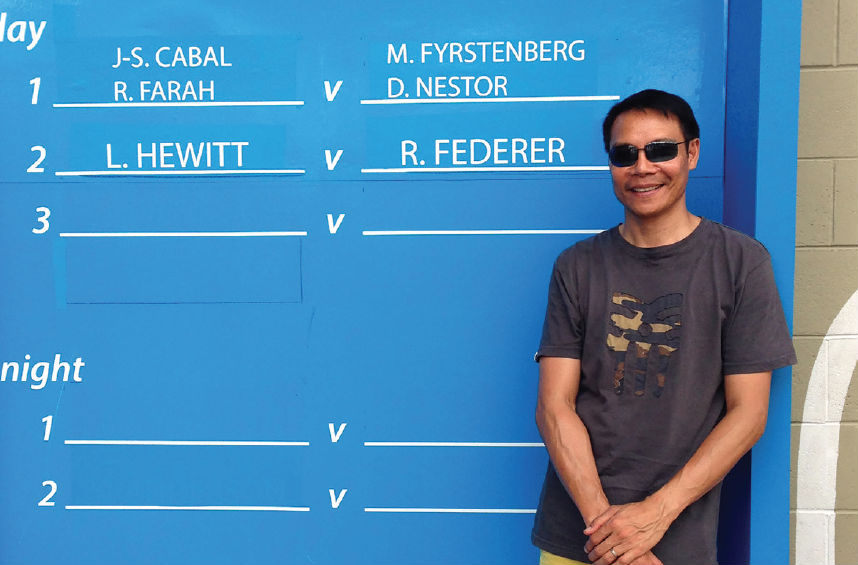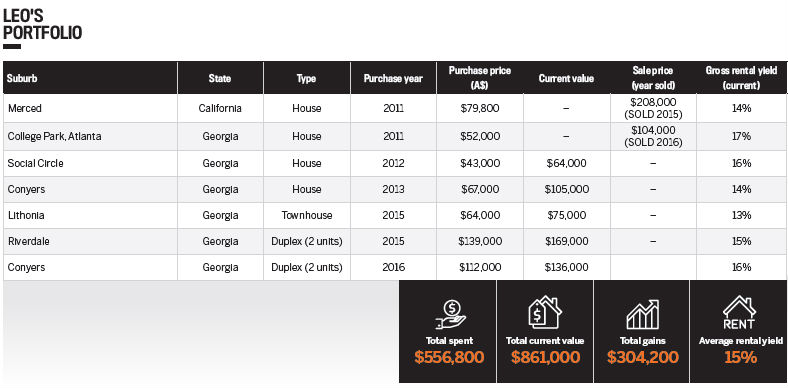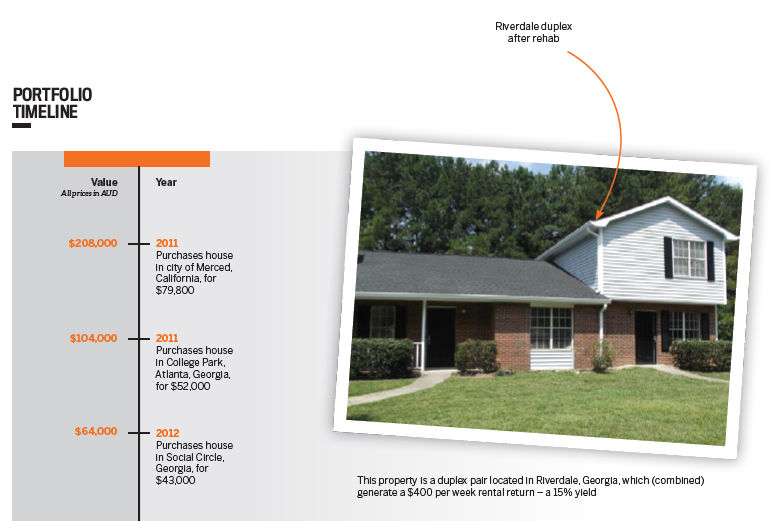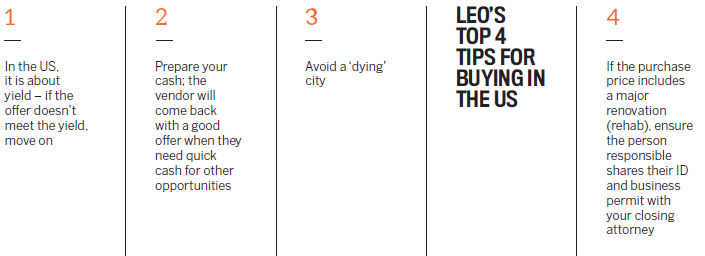 He began looking for more affordable and secure opportunities overseas. In the US, “I saw price dislocations”, he says. “Properties were sold at only around one third of their previous values and well below replacement costs.”
He began looking for more affordable and secure opportunities overseas. In the US, “I saw price dislocations”, he says. “Properties were sold at only around one third of their previous values and well below replacement costs.”
That same year, Leo set up an SMSF to invest a portion of his super fund money directly in the US. Then, in early 2011, he travelled to Merced City in northern California to make his first US property purchase.
“In my research, I saw a CNBC article, “The Top 10 Best Property Investments in the US”, and Merced was number one. I checked it out by googling the city, then booked a flight to LA,” Leo says.
Upon arrival, Leo sought out a local Coldwell Banker real estate agent, who helped him find dwellings in his price range.
“She drove me around the suburbs at night-time because she said that was a good time to see whether the neighbourhood was safe or not,” he says.
It wasn’t smooth sailing right away, as Leo lost out on the first property he bid for, due to another buyer making a higher offer. While the experience was disappointing, he applied the lesson learnt in his next bid.
“For the second property I bid for, I offered a little more than the asking price,” he says.
“It was a foreclosed home, and Bank of America was asking for around US$79,000. I checked it out online and found that the previous sale price was around US$308,000. I bid for a cash offer of around US$79,500.”
His strategy worked, and Leo was soon the proud owner of his first international property investment.
Weeks after settling, it was rented out, and the home never fell vacant until it was sold four years later – for 250% more than the original purchase price (in AUD).

Before he flew back to Australia, Leo opened a US bank account and applied for a US tax number called an Employer Identification Number. He also applied for an LLC, which is “a way to protect one’s assets and to minimise tax in the US”. With that in hand, he established his SMSF in Australia as the shareholder, completing the process needed to facilitate future investments.
Six months later, in June 2011, Leo headed to Atlanta, Georgia, where he bought his second property.
“The three-bedroom, two-bathroom house was only around US$50,000 and included a major rehab [renovation]. The guys who were selling it to me by email – I did not know them – offered an all-in-one service for a fee, including building inspection and a closing attorney [to handle conveyancing],” he says.
To manage risk, Leo opted to hire his own building inspector and closing attorney.
“I googled a couple of lawyers online, phoned them and asked for a trade reference. I settled on Harlan and Associates in Atlanta. They organised a title search and did their due diligence, such as tax and encumbrances checks. They also organised a title insurance to protect my investment should the title have been defective,” he explains.
“This property was rented a few weeks later after rehab. Four and a half years later, I sold this property for around 195% of its original purchase price in AUD terms.”
Word of Leo’s US investments evidently travelled, and he began receiving emails with US property listings from people he had never made contact with.
To be able to sift wisely through all the options, he decided he had to draw boundaries.
“A rental yield of 15% was my benchmark, plus a potential price appreciation. By looking at historical price data, if the purchase price is around half the previous selling price, it’s a good sign,” he says.
“In the US, it’s easy to get a valuation check, historical data of the property and detailed information about the property and
the suburb online.”

“There is a double taxation treaty between Australia and the US so you don’t get taxed twice”

Leo also studied up on the tax and accounting requirements set by US law, which led him to discover the ways in which the US taxation system is far more complicated than the Australian one. Working with US TaxCentral, a US accountant based in Queensland, he was able to submit documents and obtain tax treaty-reduced tax rates.
“There is a double taxation treaty between Australia and the US so you don’t get taxed twice. Federal income tax paid in the US becomes a credit in your income tax return in Australia when you file for your annual tax return,” he explains.
Having now invested in a total of seven rental homes in the US, Leo plans to continue focusing on undervalued properties in that market. “On average, I want to add one property a year in the US. The strategy is to sell properties that have increased in value and replace them with two properties from the proceeds of one we sold,” he says.
To find such properties, Leo combs through auctions and wholesale sellers. He’s learned to follow his own intuition, after missing out on a highly lucrative investment in Las Vegas because other people convinced him Nevada was a dud location.
“I wanted to buy a three-bed, two-bath, double-garage home in Las Vegas for around $60,000 [AUD]. But I didn’t, and I have big regrets! The ROI would have been over 300% in just five years,” he says.
“Now, my thinking is: don’t be afraid to try to do something different. To others who are considering it, I suggest you do your research and due diligence and don’t listen too much to negativity. Trust your instinct and trust God. You have got to trust yourself because only you can make you succeed.”
